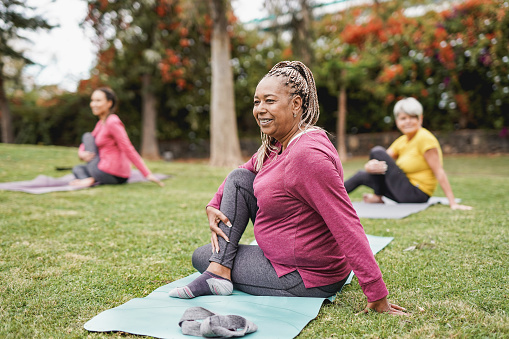December 10, 2021

As adults age, keeping active is one of the most important things they can do for their health. Exercise can help aging adults slow and, in some cases, prevent the onset of certain age-related conditions, including heart disease and stroke, osteoporosis, joint and muscle pain, and more. Seniors who exercise are also more likely to be independent and self-reliant, according to a study published by Harvard Medical School.
Finding the right kinds of exercise for older adults can help them stay safe while keeping active.
What Types of Exercises Are Best for Older Adults?
For a safe exercise routine, older adults should focus on low-impact exercises that are easy on the joints. Low-impact exercises decrease one’s risk of injury, as opposed to high-impact exercises that may be too strenuous and can therefore put older adults at risk of injury. Some examples of low-impact exercises include brisk walking and water aerobics, while running and jumping are considered high-impact exercises.
Exercises that are great for seniors include:
- Resistance band workouts
- Yoga / pilates
- Walking
- Bodyweight workouts
- Strength training with dumbbells
Exercises that seniors should avoid include:
- Popular training programs, like CrossFit
- Long-distance running
- High-intensity interval training
- Squats with added weight (with a barbell or dumbbell)
- Certain weight lifting maneuvers, such as bench press, deadlift, and power clean
How to Create a Safe Workout Routine
Before starting any exercise routine, talk to your primary care physician and any specialists you may be seeing. Your primary care physician will most likely want to perform a thorough physical examination to determine what types of exercises are best for you.
If you have been diagnosed with a chronic condition, speak with your doctor or specialist to understand whether, and how, your condition may affect your ability to do exercise regularly and safely.
Some ways you can stay safe while exercising are to:
- Start slow
- Warm up
- Follow instructions
- Stay hydrated
- Don’t overdo it
Over time, as you advance, your doctor may recommend you add more variety to your exercise routine or that you slightly increase your workout time.
How Much Physical Activity Should Older Adults Do?
The most important things for older adults to keep in mind when planning their activity routine is to sit less and move more. Older adults with chronic conditions, or who are not generally fit, should be as active as their condition and physical condition allow.
For adults 65 years old and older who are generally fit, the CDC recommends that they aim for 30 minutes of moderately-intense exercise a day, for 5 days a week (150 minutes a week). An example of a moderately-intense exercise is brisk walking. The CDC also recommends that older adults do muscle-strengthening activities at least 2 days a week.
Consider Hiring a Home Aide for Seniors Who Need Help Exercising Safely at Home
Older adults who need assistance with mobility or help maintaining a regular exercise routine should consider hiring a home care aide or nurse. JSP Home Care Services provides geriatric services, both home health aide and home nursing services, to aging adults who choose to age in place. To learn more about how we help older adults stay healthy at home, contact us online or call 866.860.2528.
Sources: